
The Jat Regiment is an infantry regiment of the Indian Army, of which it is one of the longest-serving and most decorated regiments. The regiment has won 19 Battle Honours between 1839 and 1947, and post-independence it has won Five Battle Honours, including 3 Ashok Chakra, 2 Victoria Cross, 2 George Cross, 13 Kirti Chakra, 8 Mahavir Chakra, 3 Military Medal, 53 Shaurya Chakras, 39 Vir Chakras and 343 Sena Medals. During its 200-year service history, the regiment has participated in various actions and operations in India and abroad, including the First and the Second World Wars. Numerous battalions of the Jat Regiment, including the 14th Murray's Jat Lancers, fought in the First World War.

The Ashoka Chakra is India's highest peacetime military decoration awarded for valor, courageous action, or self-sacrifice away from the battlefield. It is the peacetime equivalent of the Param Vir Chakra (PVC) and is awarded for the "most conspicuous bravery or some daring or pre-eminent valour or self-sacrifice" other than in the face of the enemy. The decoration may be awarded either to military or civilian personnel.

The Parachute Regiment is an airborne and special forces regiment of the Indian Army. It was raised in 1945 as part of the British Indian Army but was disbanded after World War II and was re-raised in 1952 as part of the Indian Army. Currently it consists of fifteen Special Forces, two Territorial Army and one Rashtriya Rifles battalions.
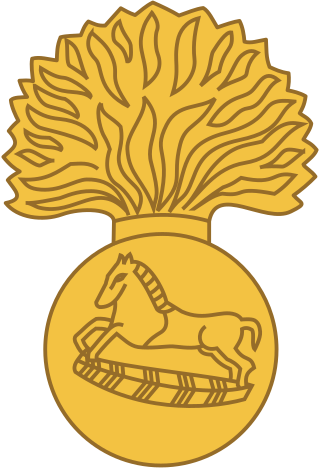
The Grenadiers is an infantry regiment of the Indian Army, formerly part of the Bombay Army and later the pre-independence British Indian Army, when the regiment was known as the 4th Bombay Grenadiers. It has distinguished itself during the two world wars and also since the Independence of India. The regiment has won many battle honours and gallantry awards, and is considered to be one of India's most decorated regiments with three Param Vir Chakra awardees in three different conflicts.

The Sikh Regiment is an infantry regiment of the Indian Army. It is the most highly decorated regiment of the Indian Army and in 1979, the 1st battalion was the Commonwealth's most decorated battalion, with 245 pre-independence and 82 post-independence gallantry awards, when it was transformed into the 4th battalion, Mechanised Infantry Regiment. The first battalion of the regiment was officially raised just before the partial annexation of the Sikh Empire on 1 August 1846, by the British East India Company. Currently, the Sikh Regimental Centre is located in Ramgarh Cantonment, Jharkhand. The Centre was earlier located in Meerut, Uttar Pradesh.

The Kumaon Regiment is one of the oldest infantry regiments of the Indian Army. The regiment traces its origins to the 18th century and has fought in every major campaign of the British Indian Army and the Indian Army, including the two world wars, and is one of the highest decorated regiments of the Indian Army.
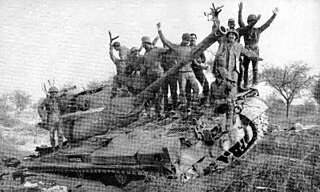
The Battle of Basantar, also known as the Battle of Shakargarh or Battle of Barapind, was one of the vital battles fought as part of the Indo-Pakistani War of 1971 in the western sector of India. The Indian troops won a hard-fought battle that secured this area in the Punjab/Jammu sector. The name Battle of Basantar actually encompasses the entire gamut of battles and skirmishes fought in the Shakargarh sector.
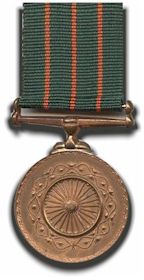
The Shaurya Chakra is an Indian military decoration awarded for valour, courageous action or self-sacrifice while not engaged in direct action with the enemy. It may be awarded to civilians as well as military personnel, sometimes posthumously. It is third in order of precedence of peacetime gallantry awards and comes after the Ashoka Chakra and the Kirti Chakra. It precedes the Yudh Seva Medal.

The Kirti Chakra is an Indian military decoration awarded for valour, courageous action or self-sacrifice away from the field of battle. It may be awarded to civilians as well as military personnel, including posthumous awards. It is the peacetime equivalent of the Maha Vir Chakra. It is second in order of precedence of peacetime gallantry awards, comes after Ashoka Chakra and before Shaurya Chakra. Before 1967, the award was known as the Ashoka Chakra, Class II.

The Madras Regiment is the oldest infantry regiment of the Indian Army, originating in the 1750s as a unit of the British East India Company. The regiment took part in numerous campaigns with the British Indian Army and the post-independence Indian Army. The Madras Regiment primarily recruits from the erstwhile Madras state and the kingdom of Mysore. However, the 9th and 16th battalions were later formed from troops from the kingdoms of Travancore and Cochin in present day Kerala.

Parachute Regiment (Special Forces), informally referred to as Para-Commandos, is a group of special forces battalions of the Parachute Regiment in the Indian Army. These units specialise in various roles including counter-insurgency, counter-terrorism, direct action, hostage rescue, special reconnaissance and unconventional warfare.
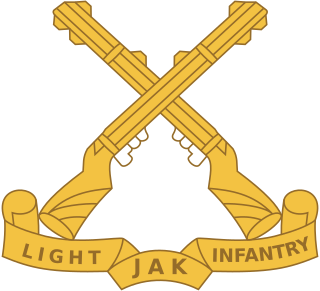
The Jammu and Kashmir Light Infantry is an infantry regiment of the Indian Army. The regimental center is in Srinagar's Airport Complex at Awantipora with a winter setup near Jammu. Its regimental insignia consists of a pair of crossed rifles. The regiment mostly consists of volunteers from the state of Jammu & Kashmir and ethnic groups from the state. The Jammu and Kashmir Light Infantry is considered to be one of the most decorated regiment of the Indian army having won 1 Param Veer Chakra and 3 Ashok Chakra. Naib Subedar Chuni Lal of the 8th battalion Jammu and Kashmir Light Infantry is one of the most decorated personnel of the Indian Army.
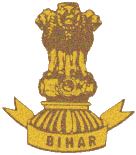
The Bihar Regiment is an Indian Army infantry regiment. It traces its origins back to the British Indian Army. The Bihar Regiment was formed in 1941 by regularising the 11th (Territorial) Battalion, the 19th Hyderabad Regiment, and raising new battalions. The Bihar Regimental Centre (BRC) is located at Danapur Cantonment, Patna, the second oldest cantonment of India. INS Vikramaditya, the Indian Navy's largest ship and one of its two aircraft carriers is affiliated to the Bihar Regiment, Indian Army's highly decorated and battle-hardened unit.
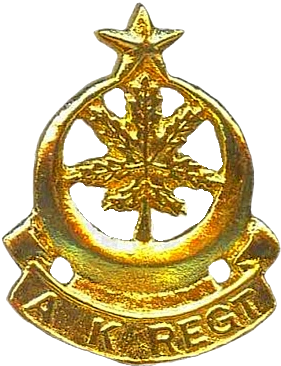
The Azad Kashmir Regiment is one of six infantry regiments in the Pakistan Army named after Azad Kashmir. It holds the distinction of being the only Battle Born Regiment in South Asia, formed by locals of Azad Kashmir to fight against Dogra Raj and it is the first regiment raised after Pakistan's independence. With the Regimental Centre at Mansar Mansar Camp in Attock District, the Regiment has gallantly participated in all Operations and Wars fought by the Pakistan Army

The Deccan Horse or 9 Horse is one of the oldest and most decorated armoured regiments of the Indian Army. The Royal Deccan Horse , which was a regular cavalry regiment of the British Indian Army was formed from the amalgamation of two regiments after World War I. They saw service from the Mutiny of 1857 up to and including World War II.
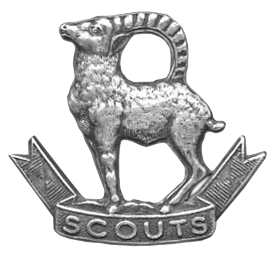
The Ladakh Scouts is a mountain infantry regiment of the Indian Army, nicknamed as the "Snow Warriors" or "Snow Leopards". The regiment specializes in cold-weather warfare and mountain warfare, long-range penetration, maneuver warfare, raiding with small unit tactics, and reconnaissance in difficult to reach and dangerous terrain. Its primary role is to guard India's borders in the high altitudes of the Union Territory of Ladakh.
69 Armoured Regiment is an armoured regiment of the Indian Army.

Subedar Major and Honorary Captain Mahendra Singh, KC, SM is a decorated Indian Army Junior Commissioned Officer (JCO) of 9 Para SF. During an operation, he was paralysed on one side of his body.
97 Field Regiment is part of the Regiment of Artillery of the Indian Army.
162 Medium Regiment is part of the Regiment of Artillery of the Indian Army.
















